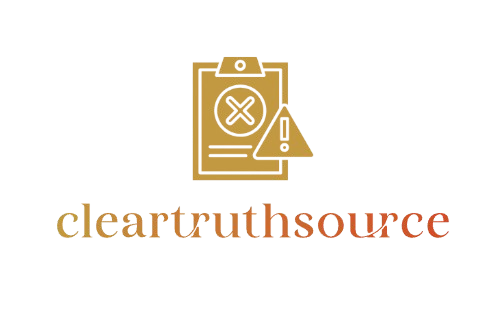Public opinion might seem like a mysterious beast, but measuring it is more like herding cats—challenging yet fascinating. Understanding what people think can shape policies, influence elections, and even dictate the latest TikTok trends. So how do experts turn the chaos of human thought into quantifiable data?
How is Public Opinion Measured
Various methods exist for measuring public opinion, each offering unique insights. Understanding these techniques aids in decoding complex public sentiments.
Surveys and Polls
Surveys collect data from a sample of individuals to gauge opinions on specific issues. Polls often employ a structured questionnaire, ensuring results reflect broader sentiment. Random sampling enhances the reliability of findings. Online platforms, telephone interviews, and face-to-face interactions serve as common mediums for conducting surveys. Results inform decision-makers in politics and business, influencing policy and marketing strategies.
Focus Groups
Focus groups provide qualitative data through moderated discussions. Typically composed of 6 to 12 participants, these groups explore in-depth opinions on specific topics. A trained moderator guides conversations, allowing participants to express their views freely. Insights gathered reflect broader public sentiment but require careful analysis due to limited sample sizes. Marketers and policymakers frequently use focus groups to identify trends and refine strategies.
Interviews
Interviews yield detailed insights through one-on-one interactions. Conducted either in-person or over the phone, they allow for deep exploration of individual perspectives. Structured or semi-structured formats can enrich data collection by promoting open dialogue. Interviewees may feel more comfortable sharing nuanced opinions in a private setting. Researchers, journalists, and organizations utilize interviews to gather comprehensive information, shaping a clearer understanding of public opinion.
Tools and Techniques

Various tools and techniques measure public opinion effectively. Each method serves a distinct purpose, offering valuable insights into how individuals think and feel.
Online Platforms
Online platforms play a significant role in gauging public sentiment. Social media channels like Twitter and Facebook collect real-time opinions through likes, shares, and comments. Surveys on these platforms reach diverse demographics quickly, allowing for a range of responses. Additionally, online polls often utilize engaging formats to enhance participation. The low cost and high accessibility of digital tools enable researchers to gather significant amounts of data efficiently.
Telephone Interviews
Telephone interviews remain a traditional yet effective technique for measuring public opinion. This method allows researchers to reach individuals who may not engage online, ensuring a broader representation of views. Trained interviewers conduct conversations, asking tailored questions to probe deeper into respondents’ thoughts. While some may view this approach as outdated, it consistently yields detailed responses and personal connections. Researchers can adapt questions based on initial answers, providing flexibility during the discussion.
Face-to-Face Interactions
Face-to-face interactions offer rich qualitative data through personal engagement. This technique often occurs in focus groups or individual interviews, enabling facilitators to observe body language and emotional reactions. Participants share opinions in a comfortable environment, fostering open discussion. Moderated sessions guide conversation, allowing for deeper exploration of attitudinal nuances. By ensuring a small group size, moderators can facilitate interaction and encourage diverse viewpoints.
Factors Influencing Public Opinion Measurement
Several factors influence the measurement of public opinion. Understanding these factors helps in accurately interpreting survey results.
Demographics
Demographics significantly shape public opinion measurement. Age, gender, race, and education level can introduce varying perspectives. For example, younger individuals may prioritize environmental issues more than older demographics. Regions also play a role; urban populations often display different opinions than rural counterparts. Effective surveys must account for these influences to ensure reliable data. Additionally, the interplay between socio-economic status and public sentiment can reveal insightful trends. Analyzing demographic segments leads to a more nuanced understanding of collective views.
Timing of Surveys
Timing elements critically affect public opinion measurement. Conducting surveys immediately after significant events often captures heightened emotions. For instance, polling after a major political debate may yield different results than polling several weeks later when opinions may stabilize. Seasonal events can also impact public sentiment; holiday periods may shift people’s concerns and expectations. Furthermore, conducting surveys during periods of social unrest can reveal urgent public issues. Proper timing ensures that surveys reflect the current emotional landscape, providing accurate snapshots of public sentiment.
Challenges in Measuring Public Opinion
Measuring public opinion presents numerous challenges. Experts encounter various biases and issues that can skew results.
Sample Bias
Sample bias occurs when selected individuals don’t represent the broader population. This discrepancy affects survey accuracy and reliability. Researchers often rely on random sampling techniques to mitigate such bias. However, challenges arise from demographic underrepresentation. For instance, surveys that predominantly include participants from urban areas may overlook rural perspectives. Variations in access to technology can also create disparities. Those without internet access often remain excluded from online polls, skewing results. Achieving a balanced representation becomes crucial for trustworthy insights.
Question Wording
Question wording significantly influences survey outcomes. Ambiguous or leading questions can shape respondents’ answers. For example, asking, “Do you support a clean environment?” might elicit different responses than “Should we prioritize environmental regulation?” Subtle language shifts can lead to varied interpretations. Complexity in phrasing may confuse respondents, causing inaccurate answers. Clear and neutral wording enhances response validity. Crafting straightforward questions promotes more authentic representation of public sentiment, ensuring that data gathered reflects true opinions.

